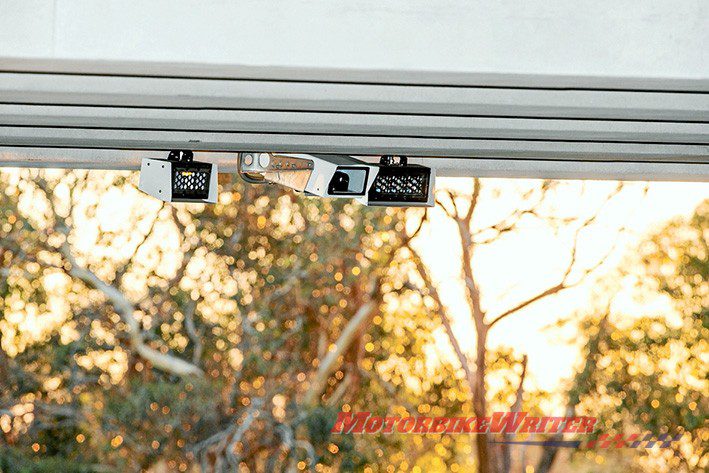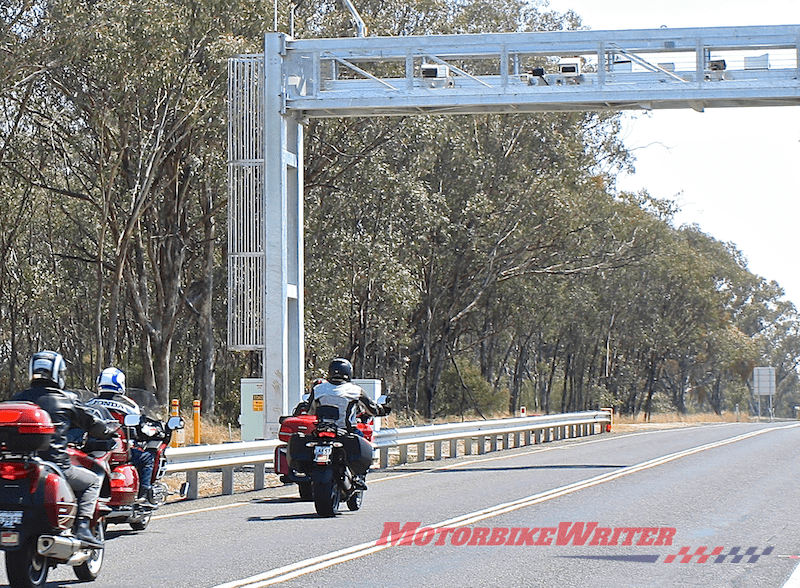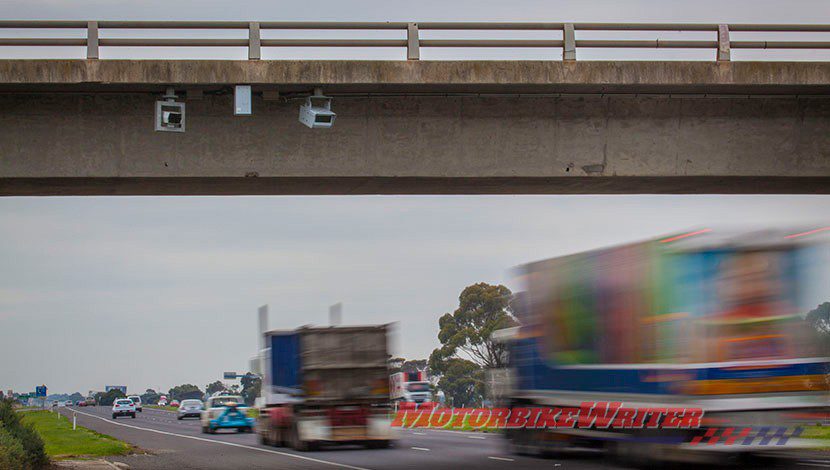Camera surfing is the phenomenon where riders and drivers slow as they approach a speed camera and then speed up after the cameras.
The expression of camera surfing was developed by former Victorian Road Safety Camera Commissioner Gordon Lewis and it’s been proved in research by his office.
So does that mean rather than generally slowing traffic, speed cameras may be causing motorists to speed up in areas they know or believe there are no speed cameras?
University of Melbourne Chair of Statistics and motorcyclist Professor Richard Huggins says he has experienced this phenomenon, “especially on the freeways around town where there are fixed cameras”.

“Frequent users of the roads know their locations,” the Prof says.
“Mobile cameras can only be set at approved locations and those are also known to regular users of the roads.
“In any case, most GPS systems know where they are.
“The Highway Patrol and solo motorcycles are a different matter as there are no fixed sites.”
‘Surfing’ speed cameras
The phenomenon of camera surfing has been proved by two Victorian Road Safety Camera Commissioner surveys of point-to-point or “average speed” cameras on the Peninsula Link and Hume Highway.
They measured millions of trips and were able to assign the speed of each vehicle as they passed the first and last cameras as well as their average speed over the distance.
(By the way, only South Australia and Victoria have instantaneous cameras at the start and end of point-to-point camera installations which means you could possibly cop three fines for speeding. In other states you can only cop the one “average speed” offence.)
It found that drivers slowed at the start and end and sped up in between. Check the animation below which clearly shows this trend.
In fact, it found that drivers who averaged up to about 113km/h average speed on the 100km/h sections were actually going slower than the speed limit at entry and exit.
Surely that means they would have had to travel at much more “dangerous” speeds than 111km/h to reach their average speed.
We put it to current Commissioner John Voyage that the average speed cameras were therefore prompting some motorists to speed faster than if there were no cameras.
He says we are “100% wrong”.




